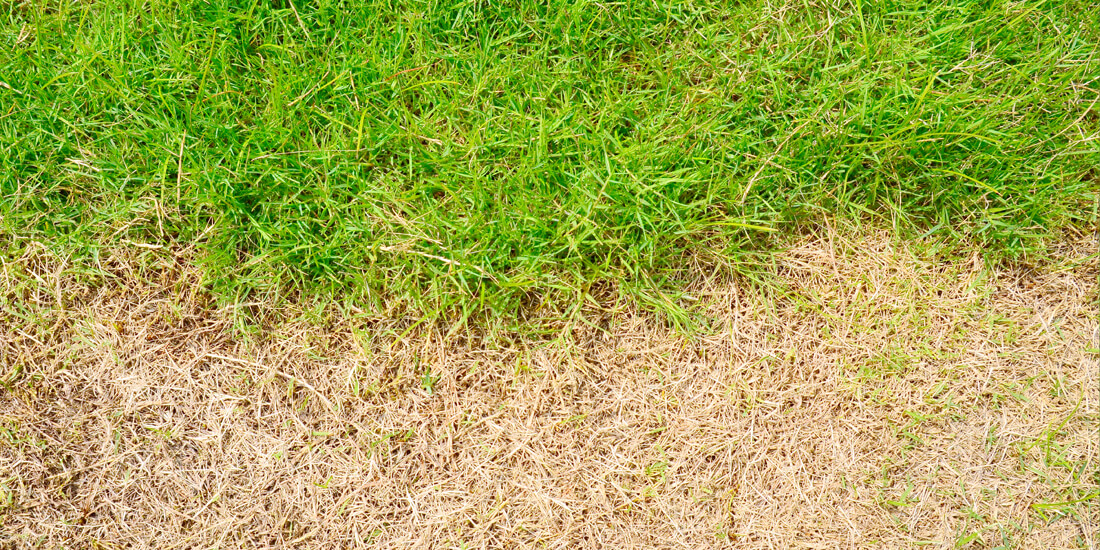How to repair leatherjacket damage in your lawn

Life after leatherjackets seems rather wonderful – you’ve got to the root of the problem and decimated those grizzly grubs from your lawn. Unfortunately, when brought back to reality, you will recognise that your hard work isn’t over yet, and you now need to repair leatherjacket damage they have left behind.
The thought of how to repair leatherjacket damage can seem like a neverending task. But it becomes easy once you know how to control it! Leatherjackets ruin your lawn by eating away at the roots of your grass. And this causes the blades to become damaged and yellow. As they feed off your grass, the parts of the lawn they have infested will turn yellow and grow larger.
If you catch them early enough (a small patch appears in your lawn), you should be able to revive any dry or yellowing grass with a quick feed such as our QUICK RELEASE: Spring / Summer – however, the reality is that even with a nematode treatment, leatherjackets will take time to be fully removed and if they have a strong hold on your lawn, your grass may die off completely.
If you can easily pull the roots up, there is no chance of rescuing the grass with fertiliser. In this case, these patches of your lawn need to be reseeded.
Step by Step
- Mow your lawn before repairing your patches, as you won’t be able to while the grass in the patches establishes
- The best course of action is to remove the dead and yellowed grass from the damaged area
- This will ensure all you are left with is bare soil
- You can do this by scarifying; through this process, you will also loosen up the top layer of soil
- Add topsoil to this area if the patch is not level with the rest of the lawn
- Rake the soil to be level with the lawn, sow your new seed at 50g per m2 and firm down by foot
You should water these patches deeply and daily for six weeks after sowing, but you can avoid doing this if there is prolonged rainfall. Refrain from mowing your lawn while the new grass establishes.
What grass seed should I use to repair leatherjacket damage?
The best grass seed to repair your lawn with is the grass seed that your lawn requires. There is no use trying to apply a quick fix if it isn’t established in the conditions you have. Consider your soil type (clay or sandy) and shade type.
If your soil type is normal, and this area in your lawn doesn’t suffer from the shade, we recommend our SUPERSTAR: Back Lawn for the fastest results.
If regular reseeding isn’t on your agenda, you may wish to consider our RESTORE: Self-Repair lawn, as when established, it will repair any damage on its own.